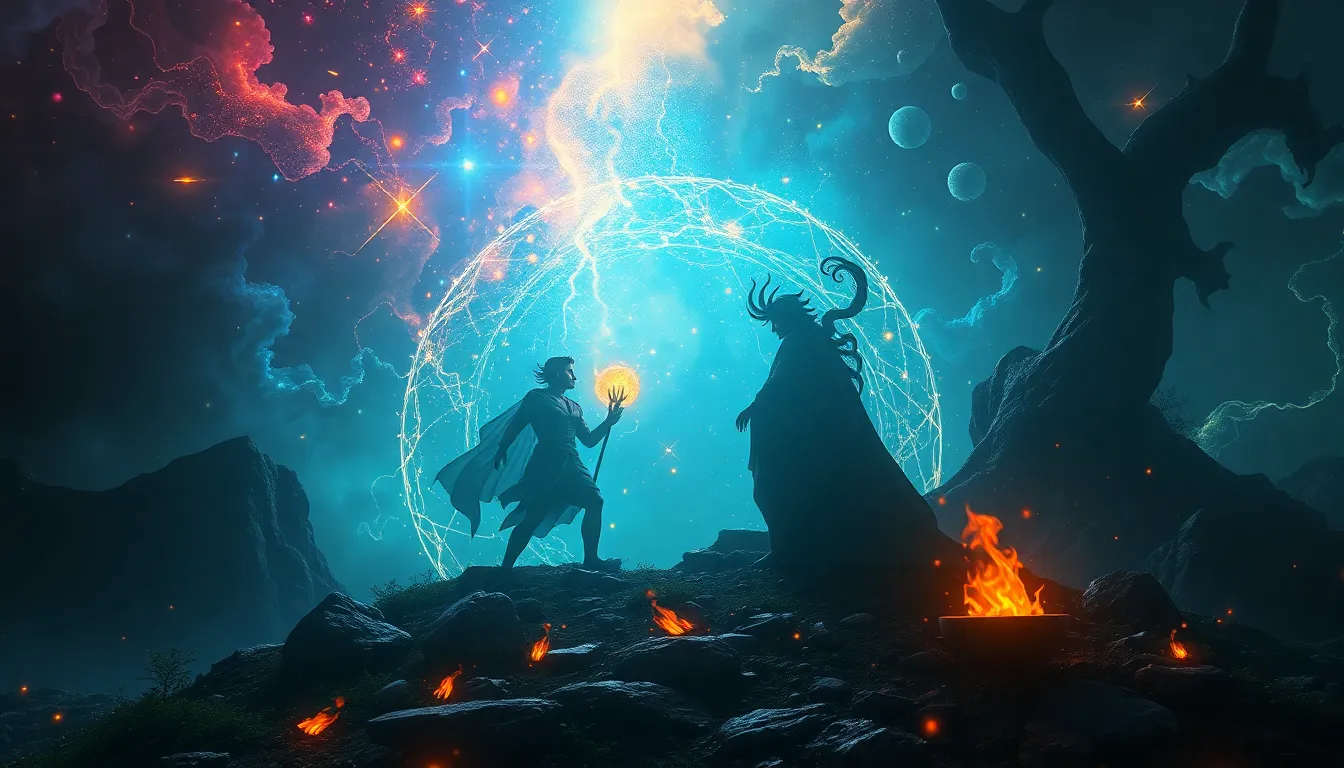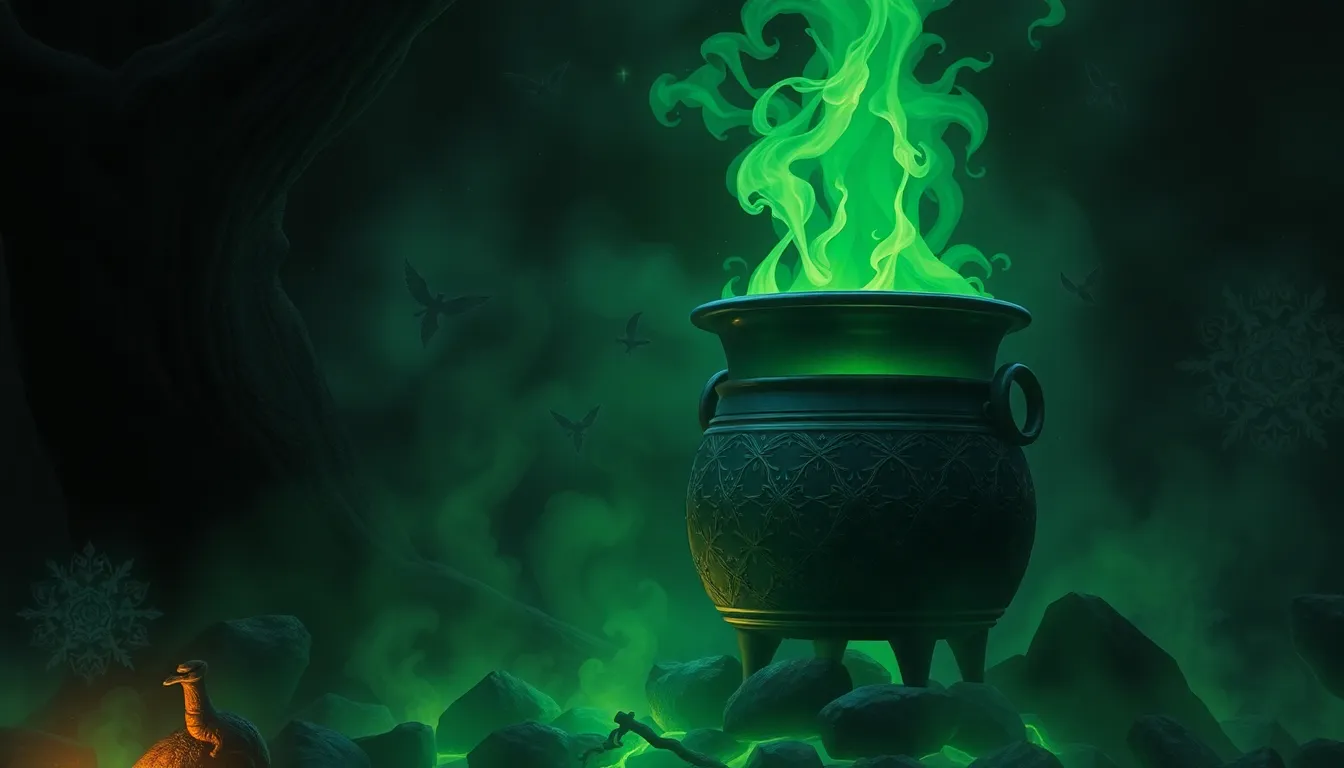The Enchanted Evolution: How Myths Embrace Transformative Change
I. Introduction to Myths and Transformation
Myths are traditional stories that serve as a fundamental aspect of cultural identity, providing insight into the beliefs, values, and practices of a society. They often explain natural phenomena, human behavior, and the mysteries of existence. Myths have the power to convey complex truths and moral lessons in a narrative form that resonates with the human experience.
The concept of transformative change refers to significant transitions that alter the course of individuals or societies. Such changes can stem from personal experiences, societal shifts, or cultural revolutions. As we explore the intersection of myths and transformation, we uncover how these narratives not only reflect change but also catalyze it.
This article will delve into the historical, psychological, and cultural dimensions of myths, illustrating their role in transformative change throughout human history. We will examine archetypes, cultural variations, and the relevance of myths in our modern world, ultimately highlighting their enduring power.
II. Historical Perspectives: Myths as Catalysts for Change
Throughout history, myths have served as catalysts for transformation in ancient civilizations. They encapsulated the aspirations and fears of a people, often prompting societal evolution.
- Ancient Civilizations: Myths from ancient Greece, Egypt, and Mesopotamia often depicted gods and heroes who faced trials, resulting in societal shifts. The stories of these figures inspired people to embrace change.
- Societal Evolution: Myths have been instrumental in cultural shifts, helping societies navigate crises and adapt to new realities. The narrative of the flood in various cultures, for instance, symbolizes renewal and rebirth.
Case studies of significant myths reveal their transformative power:
- Prometheus: The Titan who stole fire from the gods symbolizes rebellion and the quest for knowledge, prompting shifts in human understanding of science and enlightenment.
- The Phoenix: This mythical bird represents rebirth and renewal, illustrating the cycle of destruction and regeneration that permeates human experience.
III. Archetypes of Change in Mythology
Mythological narratives often employ archetypes that represent transformation. These archetypes, such as the hero and the trickster, encapsulate the essence of change and growth.
- The Hero: This archetype embarks on a journey, overcoming challenges and emerging transformed. Examples include Hercules and Odysseus, whose adventures signify the universal quest for identity and purpose.
- The Trickster: Figures like Loki or Anansi challenge norms and provoke change through chaos, highlighting the importance of adaptability and resilience.
Analysis of specific myths featuring transformative journeys underscores how these themes resonate with modern experiences. The hero’s journey, for example, mirrors individuals facing personal challenges in contemporary society.
IV. Psychological Implications: Myths and Personal Transformation
Myths play a crucial role in shaping identity and fostering personal growth. They offer frameworks through which individuals can understand their own experiences of change.
Carl Jung’s theory of the collective unconscious posits that myths tap into shared human experiences and archetypes. This connection allows individuals to relate their personal transformations to broader narratives.
During times of personal transformation, individuals often turn to myths for guidance and inspiration. These stories provide a sense of belonging and validation, illustrating that change is a universal experience.
V. Cultural Variations: Myths of Change Across the Globe
Transformative myths are abundant across various cultures, each offering unique perspectives on change.
- Native American Myths: Many Native American stories emphasize harmony with nature and the cycles of life, highlighting themes of renewal and interconnectedness.
- African Myths: African folklore often features trickster figures, emphasizing adaptability and resourcefulness in the face of adversity.
- Asian Myths: In many Asian cultures, myths involving deities and spirits address themes of balance, transformation, and the cyclical nature of existence.
A comparative analysis reveals shared themes such as rebirth, the hero’s journey, and the interplay between chaos and order. Globalization continues to impact these myths, as cultural exchanges lead to the evolution of new narratives.
VI. Myths in Literature and Art: Reflection of Transformation
Literature and art have long portrayed myths of transformation, reflecting society’s evolving understanding of change.
Throughout history, authors have drawn on mythological themes to explore human experiences. Classic works, such as Homer’s “The Iliad” and Shakespeare’s plays, are rich with transformative narratives.
The visual arts also express mythological change through symbolism and imagery. From ancient pottery to modern installations, artists depict transformation, invoking the power of myth to resonate with contemporary audiences.
Contemporary works, such as Neil Gaiman’s “American Gods,” merge modern themes with mythological elements, illustrating how these narratives continue to evolve and inspire.
VII. Mythology and Modern Society: Lessons for Today
Ancient myths remain relevant in addressing contemporary issues. They provide frameworks for understanding complex challenges such as climate change and social justice.
Myths serve as tools for navigating change, offering insights into resilience and adaptability. They encourage individuals and societies to reflect on their values and actions in the face of adversity.
Modern adaptations of myths, such as films and literature, reinterpret these stories to resonate with current societal challenges, demonstrating their timeless relevance.
VIII. The Role of Technology: Myths in the Digital Age
Digital media has transformed the landscape of myth-making and storytelling. Technology facilitates the creation and dissemination of new myths that reflect contemporary realities.
New forms of transformative myths emerge in the age of artificial intelligence and virtual reality, challenging traditional narratives and exploring the impact of technology on human experience.
As society grapples with rapid technological advancements, these emerging myths reflect fears, hopes, and the quest for identity in a digital world.
IX. Future Directions: Evolving Myths for a Changing World
As we look to the future, myths will continue to evolve, adapting to the challenges and transformations of a changing world. Speculation about the nature of these new myths reveals potential themes of resilience, unity, and the quest for meaning amidst chaos.
Ultimately, the enchanted evolution of myths underscores their enduring power to inspire, guide, and reflect the transformative journeys of humanity. As we engage with these narratives, we find not only a connection to our past but also a roadmap for navigating the complexities of our future.



